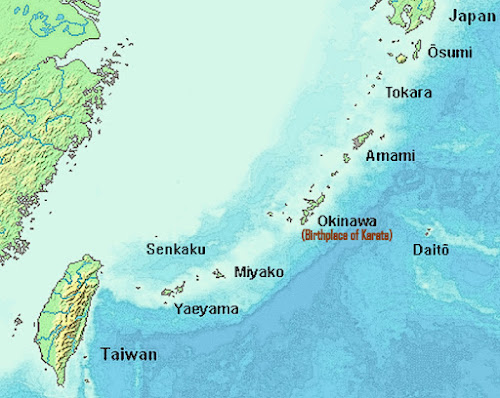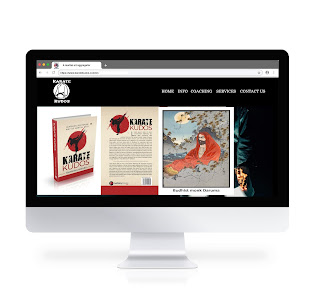Karate Overview
Karate is a martial art developed in the Ryukyu Kingdom. It developed from the indigenous Ryukyuan martial arts under the influence of kung fu, particularly Fujian White Crane. Karate is now a striking art using punching, kicking, knee strikes, elbow strikes, and open hand techniques such as knife-hands, spear-hands, and palm heel strikes. Historically, and in some modern styles, grappling, throws, joint locks, restraints, and vital point strikes are also taught. A karate practitioner is called a karateka.
Karate can be practiced as an art, self-defense, or as a combat sport. Traditional karate places emphasis on self-development. Modern Japanese style training emphasizes the psychological elements incorporated into a proper kokoro (attitude) such as perseverance, fearlessness, virtue, and leadership skills. Sport karate places emphasis on exercise and competition. Weapons are an important training activity in some styles of karate.
Karate training is commonly divided into three:
1. Kihon (basics or fundamentals),
2. Kata (forms), and
3. Kumite (sparring).
‘Kihon’ means ‘basics’ and these form the base for everything else in the style, including stances, strikes, punches, kicks, and blocks. Karate styles place varying importance on kihon. Typically, this is training in the unison of a technique or a combination of techniques by a group of karateka. Kihon may also be prearranged drills in smaller groups or pairs inside a dojo.
‘Kata’ means literally ‘shape’ or ‘model’. Kata is a formalized sequence of movements which represent various offensive and defensive postures. These postures are based on idealized combat applications. The applications, when applied in a demonstration with real opponents, are referred to as bunkai. The bunkai shows how every stance and movement is used. Bunkai is a useful tool to understand a kata. To attain a formal rank, the karateka must demonstrate competent performance of specific required kata for that level. The Japanese terminology for grades or ranks is commonly used. Requirements for examinations vary from school to school.
‘Kumite’ means ‘sparring’ in karate. It literally means ‘meeting of hands’. Kumite is practiced both as a sport and as self-defense training. Levels of physical contact during sparring vary considerably.
According to ancient Okinawan legend, karate had its beginnings in India with a Buddhist monk named Daruma. Tradition says that Daruma traveled from India to the Shaolin Temple in the Honan Province of China. There he began teaching the other monks his philosophies of physical and mental conditioning. His teachings included exercises for maintaining physical strength and self-defense. This same monk, known as Bodhidharma in India and as Ta Mo in China, is credited with founding the school of Buddhist philosophy known as ‘Ch’an’ in China and ‘Zen’ in Japan. The Okinawans believe that the art known as karate today came from those original teachings of Daruma through an Okinawan who visited or lived for some time in China at the Shaolin Temple.




Comments